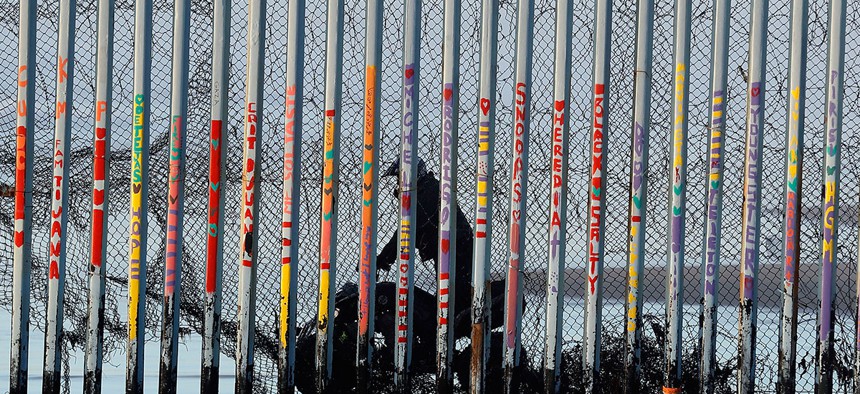Pentagon Could Claim Authority to Build Trump's Border Wall, CRS Says
Updated analysis by Congress's legal researchers predicts a court challenge.
If President Trump were to follow through on his threat to declare a national emergency so he could build a wall along the Southern border, the Defense Department might play a pivotal role in determining its own authority to perform “military construction.”
That’s according to a Jan. 10 “sidebar” memo from legal specialists at the Congressional Research Service, who freshened their past analysis of the president’s statutory emergency powers.
The memo, made public by Steven Aftergood in his blog for the Federation of American Scientists, suggests that the Pentagon might rely on the Supreme Court’s 1984 ruling in the Chevron case—which ruled for deference to agency experts on complex regulatory matters—to be final interpreter of whether a border wall is part of the department’s mission.
Congress’s research arm updated its past survey of relevant statutes, beginning with the 1976 National Emergencies Act, and moving to a 1982 update known as Section 2808 addressing military construction authority.
“If the president were to invoke the authorities discussed above to facilitate the construction of barriers along the Southern border, the use of those authorities may be challenged in federal court,” the CRS attorneys noted. “A judicial determination of whether the construction of a border wall qualifies as 'military construction' may ultimately depend on whether a court concludes that [statutory] definition of that term is ambiguous.”
The issues the courts would consider would begin with a “dispute about whether conditions at the border provide a sufficient factual basis” to invoke the updated emergency authority. And “the president must determine that the relevant construction project (i.e., border fencing) would address a problem qualifying as a national emergency,” CRS said.
“If the court were to conclude that the situation at the border qualifies as a national emergency that requires use of the armed forces and the construction of a border wall is necessary,” the research service continued, “it would then need to assess whether construction of a border wall qualifies as a “military construction project’ “ within the statutory meaning.
Because of deference to agencies under the Chevron regime, the analysis said, ”if a court were to conclude that [statute’s] definition of 'military construction' is ambiguous, it may accept the DoD’s reading of Section 2808 as including the construction of border fencing even if it would not adopt such an interpretation in the first instance.”
Or, CRS concluded, a court could conclude that because the Homeland Security Department “has primary responsibility for securing the border and the fencing deployed by DoD would likely be used primarily by DHS to assist with its long-term immigration enforcement functions, interpreting the term 'military construction' as including a border wall is not sufficiently reasonable to pass muster under Chevron.”
Finally, CRS noted, DoD’s building of a Southern border wall in part on private land would likely require the federal government to seize land through its eminent domain power, which may generate litigation over the lawfulness of such 'takings’ and trigger an obligation to pay just compensation to property owners.”
Legal challengers, however, be they individuals or local governments, would have to establish standing as having a personal stake in the controversy, CRS wrote.
Sign up for GovExec newsletters and alerts and download our app to stay informed.




